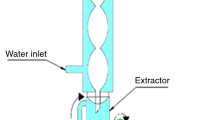Abstract
Engine oils are produced with a blend of almost 80% (w/w) base oils and 20% (w/w) of different additives. This study investigates, for the first time, the capabilities of NIR (Near Infrared) and EEM (Emission-Extraction Matrix) fluorescence spectroscopies coupled with chemometrics as low-cost, green and non-destructive methods in identifying the type of base stock into engine oil. In order to reach this goal, base stocks of different American Petroleum Institute (API) groups were analysed without any pre-treatment. PCA (Principal component analysis) performed on NIR and unfolded EEM spectra showed that samples form clusters according to their API groups and to chemical composition. PARAFAC (Parallel Factor Analysis) was also applied on 3-way fluorescence data and outcomes were consistent with PCA results. PLS-DA (Partial Least Squares Discriminant Analysis) was able to classify the base stock samples according to the API groups and satisfactory results were achieved: the correct prediction abilities on an external test set using NIR and EEM fluorescence spectroscopies were 87% and 85%, respectively. In addition, the determination of the base oil group at different gasoline engine oil performance levels was used as a method to evaluate the efficiency of the lubricants. Both spectroscopic methods appear to be fast and non-destructive to characterize the base stocks in analysing pure base stocks and engine oils with different performance levels.







Similar content being viewed by others
References
Amat S, Braham Z, Le Dréau Y et al (2013) Simulated aging of lubricant oils by chemometric treatment of infrared spectra: potential antioxidant properties of sulfur structures. Talanta 107:219–224. https://doi.org/10.1016/j.talanta.2012.12.051
American Petroleum Institute (2015) Annex E- API base oil interchangeaility guidelines for passenger car motor oils and diesel engine oils. 1–13
American Petroleum Institute (2019) Engine oil licensing and certification system seventeenth edition
Andersen CM, Mortensen G (2008) Fluorescence spectroscopy: a rapid tool for analyzing dairy products. J Agric Food Chem 56:720–729. https://doi.org/10.1021/jf072025o
Barker M, Rayens W (2003) Partial least squares for discrimination. J Chemom 17:166–173. https://doi.org/10.1002/cem.785
Bayes T (1764) An essay towards solving a problem in the doctrine of chances. Int Encycl Soc Sci Encycl 13 Nov 2019
Bikmeev DM, Sidelnikov AV, Kudasheva FK, Maistrenko VN (2015) Development of chemometric methods for signal processing in voltammetric systems of the electronic tongue type. J Anal Chem 70:718–724. https://doi.org/10.1134/S1061934815060052
Borin A, Poppi RJ (2004) Multivariate quality control of lubricating oils using fourier transform infrared spectroscopy. J Braz Chem Soc 15:570–576
Bro R, Kiers HAL (2003) A new efficient method for determining the number of components in PARAFAC models. J Chemom 17:274–286. https://doi.org/10.1002/cem.801
Gareth AL, Didier M, Roger PTL (1998) Pharmaceutical experimental design. CRC Press Taylor & Francis Group, Florida
Hirri A, Bassbasi M, Oussama A (2013) Classification and quality control of lubricating oils by infrared. Int J Adv Technol Eng Res 3:59–62
Hooshyari M, Rubio L, Casale M et al (2019) D-Optimal design and PARAFAC as useful tools for the optimisation of signals from fluorescence spectroscopy prior to the characterisation of green tea samples. Food Anal Methods 12:761–772. https://doi.org/10.1007/s12161-018-01408-0
Jolliffe IT (2002) Principal component analysis. Springer-Verlag, New York
Leardi R (2009) Experimental design in chemistry: a tutorial. Anal Chim Acta 652:161–172. https://doi.org/10.1016/j.aca.2009.06.015
Leslie RR (2006) Synthetics, mineral oils, and bio based lubricants. CRC Press Taylor & Francis Group, Florida
Mang T, Dresel W (eds) (2007) Lubricants and lubrication. Wiley, Weinheim
Mang T (ed) (2014) Encyclopedia of lubricants and lubrication 2014. Springer, Berlin, Heidelberg
Mortier RM, Fox MF, Orszulik ST (2010) Chemistry and technology of lubricants, 3rd edn. Springer, Berlin, Heidelberg
Mu T, Chen S, Zhang Y et al (2014) Motor oil classification based on time-resolved fluorescence. PLoS ONE. https://doi.org/10.1371/journal.pone.0100555
Murphy KR, Stedmon CA, Graeber D, Bro R (2013) Fluorescence spectroscopy and multi-way techniques. PARAFAC Anal Methods 5:6557–6566. https://doi.org/10.1039/c3ay41160e
Rizvi SQA (1996) History of atomotive lubrication.pdf. SAE Trans 105:1420–1434
Shinde HM, Bewoor AK (2020) Evaluating petrol engine oil deterioration through oxidation and nitration parameters by low-cost IR sensor. Appl Petrochem Res 10:83–94. https://doi.org/10.1007/s13203-020-00248-6
Wold S, Ruhe A, Wold H, Dunn WJI (1984) The collinearity problem in linear regression. The partial least squares (PLS) approach to generalized inverses. SIAM J Sci Stat Comput 5:735–743
Acknowledgements
We thank Eni S.p.A. (Milan, Italy), Afzoon Ravan Co. (Tehran, Iran) and Bellini S.p.A. (Bergamo, Italy), Italy) for providing base stock and engine oil samples.
Author information
Authors and Affiliations
Contributions
MH: Conceptualization, Formal analysis, Investigation, Software, Writing—Original Draft. MC: Project administration, Investigation, Writing—Review and Editing.
Corresponding author
Ethics declarations
Conflicts of interest
The authors declare that they have no conflict of interest.
Additional information
Publisher's Note
Springer Nature remains neutral with regard to jurisdictional claims in published maps and institutional affiliations.
Supplementary Information
Rights and permissions
About this article
Cite this article
Hooshyari, M., Casale, M. Identification of Base Stock in Engine Oils by Near Infrared and Fluorescence Spectroscopies Coupled with Chemometrics. Surv Geophys 42, 451–465 (2021). https://doi.org/10.1007/s10712-020-09627-z
Received:
Accepted:
Published:
Issue Date:
DOI: https://doi.org/10.1007/s10712-020-09627-z




